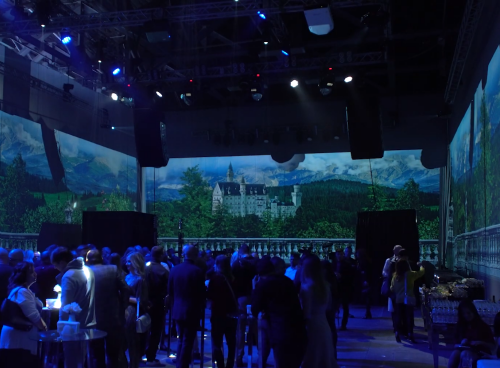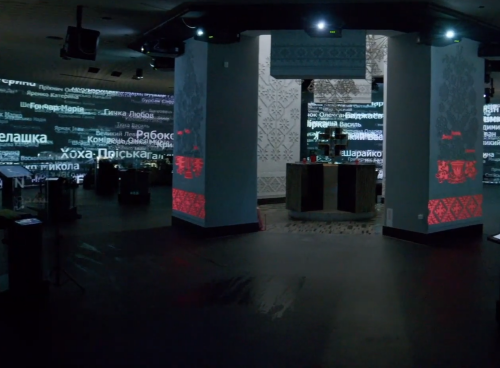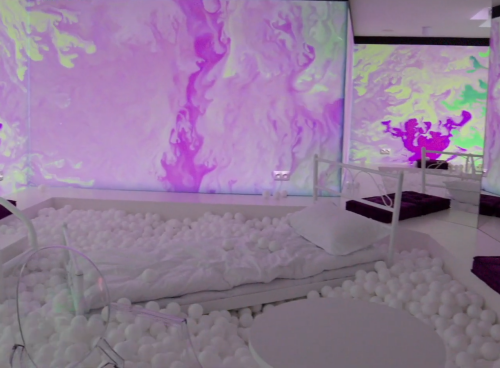Projection 360 is a type of 3D mapping that involves projecting images or video onto a spherical surface, such as a globe or a sphere. This can create the illusion of being inside a virtual environment or looking around a scene from any angle.
Large, self-respecting companies consider it necessary to purchase new technological products like 360 projection, but still do not always understand when it is really necessary and promising. The approach to creating content is also not obvious: will it be a simulation developed by 3D artists or filmed by a videographer? Today, we will answer these questions and outline the features of 360-degree projection mapping.
If you want to order a 360 Projection show for yourself or your company, fill out the form or write to us on WhatsApp.
Our
Works
We create projections on the walls of the room. This allows you to immerse guests in a new atmosphere and creates an immersive experience. Often such projections serve as a substitute for classical scenery. Using the 360 projection, any room or stage can be decorated according to the required style of the event. Examples of such work can be seen below.

360 and hologram projection for a private party

Multimedia installations and 360 projection for the Holodomor Museum

Projections and multimedia installations for business
Want a remarkable show? Fill out the brief, and we’ll create an unforgettable project for you! Share your vision with us, and our talented team of designers, artists, and technical specialists will tailor a unique multimedia experience, guaranteed to captivate your audience. Whether it’s a corporate event, public space, or private occasion, we know how to bring storytelling to life. Let’s get started on making your event one to remember!
Projection 360 can be used to help businesses in a number of ways. Some possible uses of projection 360 for business include:
- Advertising and marketing: Projection 360 can be used to create immersive and attention-grabbing ad campaigns that engage customers and drive brand awareness.
- Trade shows and events: Projection 360 can be used to create interactive and visually striking experiences for attendees at trade shows, conferences, or other events.
- Product demonstrations: Projection 360 can be used to showcase products or services in a dynamic and interactive way, helping to engage customers and differentiate a business from competitors.
- Training and education: Projection 360 can be used to create immersive learning environments that help to engage and educate employees or customers.
Overall, projection 360 can be a valuable tool for businesses that want to create unique and memorable experiences for their customers or stakeholders.
Why is this approach popular?
Panoramic 360 video mapping is a revolutionary format that immerses a person in a story with varying degrees of interactivity, where the viewer controls the viewing angle at will.
Today, there are many teams who work on shooting and editing video based on 360° technology. They also have moved away from entertainment and successfully implement 360 video projection technology in various business processes. This approach is forcing professionals to rethink standard video creation processes and look for new ways to do it.
For example, our creative Magic Innovations team has developed a unique educational performance for TODA theatre of digital art. The theatre wanted to get something special for the 50th anniversary of the UAE independence. And such unforgettable immersive show was created with the help of 360° video projection.
As a result, visitors became time travelers and felt the history in a totally new way. They were participants of the events and could get lots of useful information in the virtual mode.
Video with a viewing angle of 360°, as a rule, is formed from several pictures stretched over a sphere, less often — from just one. To get the highest quality image, where all the points of the picture are covered, the camera needs two lenses. Depending on the tasks, more than ten lenses can be used simultaneously. For video mapping 360, special cameras can be utilized.
The next step in creating a video is stitching, in which images obtained from several lenses are glued into one panoramic picture. On new cameras, this process can be automated.
There are, of course, features that should be taken into account when working with 360-degree video: due to errors at the stages of shooting or stitching, the effect of motion sickness can be created, or the picture will turn out to be implausible.
Should you implement 360 video solutions in your company?
In answering this question, there are several factors to consider, namely:
- Firstly, this technology is a young tool, and it will not replace traditional forms of PR, marketing, or education, but it can effectively complement them. At the same time, many successful examples of the implementation of the technology by Magic Innovations team prove that, in combination with the right tools, it really works.
- Secondly, it is worth clearly identifying the goals that the implementation of the product can help achieve and studying examples of working with the tool among market competitors.
- Finally, it should be noted that all the formats of any content (whether educational or entertaining) inevitably change over time along with its main audience to remain in demand. Researchers believe that 360 video is the most relevant tool for working with Generation Y today. It is this format that captivates young people and is in line with the spirit of the times.
Therefore, if you have a clear goal and understanding, you can definitely benefit from this technology together with us. Order 360 video solutions from Magic Innovations team, and our experienced creators will satisfy all your needs.
